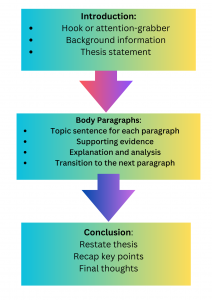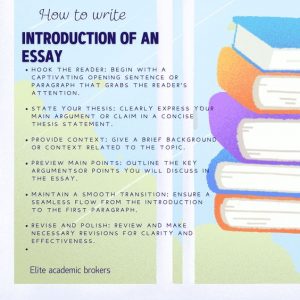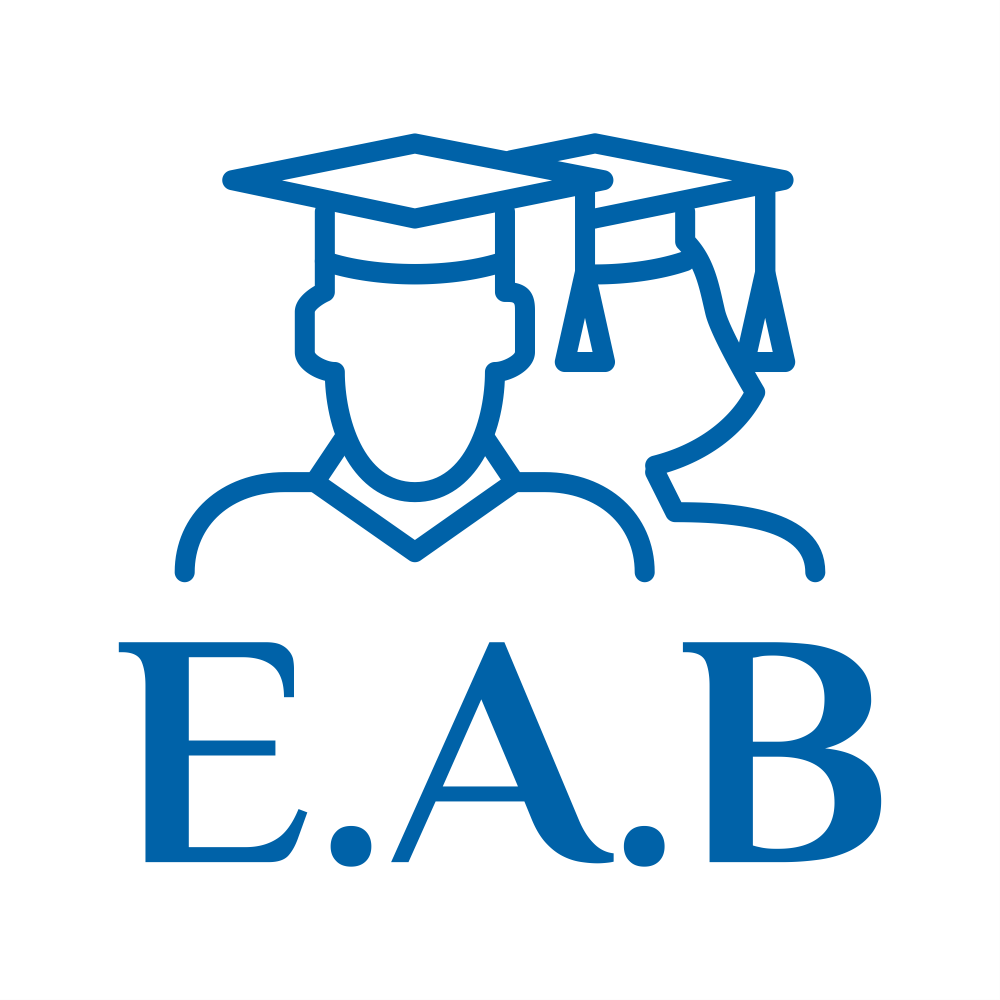How to Write an Essay Structure
Writing essays is one of the inseparable parts of academic studies. You will get several assignments that include writing different kinds of essays to demonstrate your understanding and knowledge about the subject matter in question. Whether you are working on critical synthesis, reflective essay, argumentative essay, persuasive essay without following a proper essay structure, you may fail to demonstrate your arguments efficiently.
As it is a common practice for your tutors and professors to write professional essays, they do not expect anything less than their standards from the students.
Buy College Essay
Today, we will help you to know the perfect way for academic essay structure to improve your essay writing skills to pro level. One of the primary things you need to keep in mind before working on essay writing assignments is the difference between research papers and essays.
Most students often confuse these terms thus, failing to follow the appropriate structure for their essay assignments. Most students ignore research papers vs essay differences, thus turning even simple essays into complicated ones. So let’s jump into understanding the essay structure that can help to strengthen your essay writing skills.
read on How to Write a Books Summary
Essay Structure Definition
Essay structure refers to the organization and arrangement of ideas, arguments, and supporting evidence within an essay. It provides a framework that ensures logical flow, coherence, and clarity in presenting information and communicating the main message of the essay effectively. A well-structured essay typically consists of an introduction, body paragraphs, and a conclusion. The introduction sets the stage by introducing the topic and presenting a clear thesis statement.
The body paragraphs develop and support the thesis statement with relevant evidence, examples, and analysis. Each body paragraph focuses on a specific idea or argument, with smooth transitions between paragraphs. Finally, the conclusion summarizes the main points discussed in the essay and restates the thesis, leaving the reader with a lasting impression. A strong essay structure helps readers follow the writer’s thoughts, facilitates comprehension, and enhances the overall impact of the essay.
Check on this Essay Structure Types
Key components of the essay structure
The top priority you need to keep while working on any essay assignment is to understand the requirements and purpose of the essay. Do some brainstorming while finding out the ideas, claims, and arguments concerning the topics you get.

We know that homework is boring by doing proper homework on essay topics will help you master the skill.
Once you understand the core of the assignment, you can streamline your efforts to study the relevant resources. Now, the next step is to compile the data, facts, figures, and argument you got into a meaningful essay that will be done by following a good essay structure. The following are parts of essay structure:
Introduction
It is the part of essay structure from where your essay starts. It is vital to include information that provides enough sense about the direction of your assignment. You can open with attractive lines that demonstrate the aim of the whole paper and brief information about the subject matter. Below are the three vital components of a nice introductory part of an essay:-
- Catching the reader’s attention with an opening hook.
- Background information that the reader must know before proceeding to the next part.
- Presenting your argument in a thesis statement.

Creating an Effective Introduction
The introduction serves as a captivating opening that entices the reader to delve further into your essay. To achieve this, it is essential to incorporate the appropriate elements within your introduction.
Hook
Begin your introduction with a compelling hook that grabs the reader’s attention. This can be a thought-provoking question, an intriguing anecdote, a surprising statistic, or a captivating quote. The hook sets the tone for your essay and entices the reader to continue reading.
Background Information
After hooking your reader, provide some background information on the topic. This helps to establish context and ensures that your audience understands the relevance and importance of your essay. Provide concise and relevant information that supports your thesis statement.
Thesis Statement
Conclude your introduction with a clear and concise thesis statement. This statement should convey the main argument or purpose of your essay. It acts as a roadmap for your readers, informing them of what to expect in the subsequent sections.
Body
After completing the introduction, the next part of essay structure is to create the body of your essay. This part includes several paragraphs that depend on the length and number of arguments you want to add. You should add at least three paragraphs describing one point in each.
It is recommended to follow the peel paragraphs format and essayed definitions while discussing your arguments. Follow the below points to maintain the utmost standards while writing the body of your essays:-
- Start the paragraphs with the points you want to explain in it clearly.
- The opening statement should follow by supportive evidence to strengthen your argument.
- Include enough references from resources such as books, research papers, and trustworthy websites.
- End each paragraph with your analysis of the argument
Developing the Body of the Essay
The body of your essay is where you present and elaborate on your ideas, arguments, and evidence. To ensure a well-structured and engaging body, consider the following aspects:
Organizing Ideas
Organize your ideas in a logical and coherent manner to guide your readers through your essay effectively. Various organizational structures can be employed, such as:
Chronological Order
Present your ideas in the order they occur or unfold, particularly useful when discussing historical events, processes, or narratives.
Spatial Order
Arrange your ideas based on physical location or spatial relationships, enabling the reader to visualize and comprehend your arguments better.
Order of Importance
Start with the least significant point and gradually build up to the most crucial arguments, emphasizing their significance.
Compare and Contrast
Highlight similarities and differences between two or more subjects, facilitating a comprehensive understanding of the topic.
Cause and Effect
Explore the causes and consequences of a particular phenomenon, establishing a cause-and-effect relationship that supports your thesis.
Supporting Evidence
To strengthen your arguments, back them up with credible and relevant evidence. This can include facts, statistics, expert opinions, examples, or real-life case studies. Ensure that the evidence directly supports your main points and provides persuasive support for your thesis statement.
Transition Words
Incorporate appropriate transition words and phrases to enhance the flow and coherence of your essay. Transition words like “however,” “therefore,” “in addition,” “similarly,” and “consequently” help to connect ideas, provide smooth transitions between paragraphs, and create a seamless reading experience.
Conclusion
It is the last section of essay structure that you need to work on while writing the academic essays. You can conclude this part in a short paragraph. If the length of your academic essay body is long, add a couple of paragraphs to summarize your arguments. Keep below points in mind while writing the conclusions for academic essays:-
- Provide a summary of the main points in your arguments
- Draw a judgment about the topic of your essay.
- Discuss the further scope and new ideas concerning the subject matter.
We hope that this article will help you to draft unexceptional essays that follow an appropriate structure. We can understand that academic writings can turn daunting for students.
If you are also facing difficulties while writing assignments, you can take the help of the essay writing services using Elite Academic Brokers.
We also provide proofreading help and rewriting services for students and professionals facing problems with essay writing. Here is also a sample of how to structure a research paper.
Read this Essay Structure Types
Writing an Effective Conclusion
The conclusion of your essay is your final opportunity to leave a lasting impression on your readers. Consider the following elements to craft an effective conclusion:
- Summarize the main points discussed in your essay, reinforcing the key arguments and ideas.
- Restate your thesis statement, but in a slightly different way to emphasize its importance.
- Leave the reader with a thought-provoking question, a call to action, or a relevant quote to encourage further reflection on the topic.
Check on Essay Structure Template
Editing and Proofreading
Once you have completed your essay, take the time to edit and proofread it thoroughly. Check for grammar and spelling errors, ensure consistency in style and tone, and verify that your ideas flow logically and coherently. It is beneficial to seek feedback from peers or mentors to gain fresh perspectives and identify any areas that need improvement.
Types of Essay Structure
When it comes to writing an essay, having a clear and effective structure is crucial for presenting your ideas in a coherent and engaging manner. Here are two types of essay structures commonly used:
1. The Traditional Structure:
- Introduction: Introduce the topic, provide background information, and present a clear thesis statement.
- Body Paragraphs: Each paragraph focuses on a separate point or argument, supported by evidence, examples, or analysis.
- Conclusion: Summarize the main points, restate the thesis, and provide a thought-provoking closing statement.
2. The Problem-Solution Structure:
- Introduction: Introduce the problem or issue at hand and provide context.
- Problem Explanation: Present a detailed analysis of the problem, including causes, effects, and its significance.
- Solution Proposal: Offer possible solutions or strategies to address the problem, supported by evidence and logical reasoning.
- Counterarguments and Refutation: Address potential counterarguments and refute them with compelling evidence or alternative perspectives.
- Conclusion: Summarize the problem, the proposed solution, and emphasize the importance of taking action.
Remember, these structures are just guidelines, and you can adapt them to fit the specific requirements of your essay topic and assignment. The key is to maintain coherence, logical flow, and clarity throughout your essay.
Essay Structure Example
An essay typically follows a structured format that includes an introduction, body paragraphs, and a conclusion. Here’s an example of how you can structure an essay:
Title: (if required)
Introduction:
- Hook: Begin with a compelling sentence or question to grab the reader’s attention.
- Background Information: Provide some context or background information related to the topic.
- Thesis Statement: Clearly state the main argument or purpose of your essay. This is often the last sentence of the introduction.
Body Paragraphs (usually 3-5 paragraphs):
- Topic Sentence: Start each paragraph with a clear topic sentence that introduces the main point of that paragraph.
- Explanation and Evidence: Provide explanations, examples, evidence, or quotations that support your topic sentence.
- Analysis: Analyze the evidence and explain how it relates to your thesis statement.
- Transition: Use transition sentences or phrases to smoothly connect your paragraphs.
Conclusion:
- Restate Thesis: Begin your conclusion by restating your thesis statement in different words.
- Summarize Key Points: Summarize the main points or arguments from your body paragraphs.
- Final Thoughts: Offer some final thoughts, insights, or reflections on the topic.
- Call to Action or Implication: Consider what your reader should do or think after reading your essay.
- Ending Statement: End with a strong closing statement that leaves a lasting impression.
References or Works Cited (if required):
- List any sources you used in your essay, following the appropriate citation style (e.g., APA, MLA, Chicago).
Here’s a brief example of how this structure might be applied in an essay about the benefits of regular exercise:
Title: The Benefits of Regular Exercise
Introduction:
- Hook: Did you know that just 30 minutes of exercise a day can significantly improve your overall health?
- Background Information: Exercise has long been recognized as a crucial component of a healthy lifestyle.
- Thesis Statement: This essay will explore the numerous physical, mental, and emotional benefits of incorporating regular exercise into one’s daily routine.
Body Paragraphs:
- Physical Health Benefits:
- Topic Sentence: Regular exercise contributes to better physical health.
- Explanation and Evidence: Exercise helps maintain a healthy weight, reduces the risk of chronic diseases, and improves cardiovascular health.
- Analysis: These physical health benefits are essential for a long and fulfilling life.
- Mental Health Benefits:
- Topic Sentence: Exercise also has positive effects on mental well-being.
- Explanation and Evidence: It releases endorphins, reduces stress and anxiety, and enhances cognitive function.
- Analysis: The connection between physical activity and mental health underscores the holistic benefits of exercise.
- Emotional Benefits:
- Topic Sentence: Emotional well-being is another area where exercise makes a significant impact.
- Explanation and Evidence: Exercise can boost self-esteem, alleviate symptoms of depression, and improve mood.
- Analysis: The emotional benefits of exercise contribute to a more positive and balanced life.
Conclusion:
- Restate Thesis: Regular exercise is not just about physical health; it also benefits mental and emotional well-being.
- Summarize Key Points: Exercise has a multifaceted impact, from reducing the risk of diseases to enhancing mood and self-esteem.
- Final Thoughts: Incorporating regular exercise into one’s routine is a small yet powerful step toward a healthier and happier life.
- Call to Action or Implication: Consider starting or maintaining an exercise routine to experience these benefits firsthand.
- Ending Statement: In a world where health and well-being are paramount, the choice to exercise regularly is an investment in oneself that pays immense dividends.
This structure serves as a basic guideline, and the number of body paragraphs and the specific content may vary depending on the essay’s length and complexity. It’s essential to adapt the structure to fit the specific requirements of your essay and to ensure that your ideas flow logically and coherently.
Check on various structure
Analytical Essay Structure
Argumentative essay structure
Cause and Effect Essay Structure
Compare and contrast essay structure
narrative essay structure
Persuasive essay structure
Recap
Mastering the art of essay structure is essential for creating impactful written pieces. By following the principles outlined in this article, you can elevate your essay writing skills and captivate readers from the start. A well-structured essay begins with a compelling introduction and ends with a strong conclusion. Organize your ideas logically in the body, using transition words for smooth transitions.
Support your claims with evidence and examples to enhance credibility. Edit and proofread meticulously to ensure clarity and coherence. By implementing these strategies, you’ll craft essays that engage, inspire, and leave a lasting impression. Embrace the power of essay structure and take your writing to new heights!










